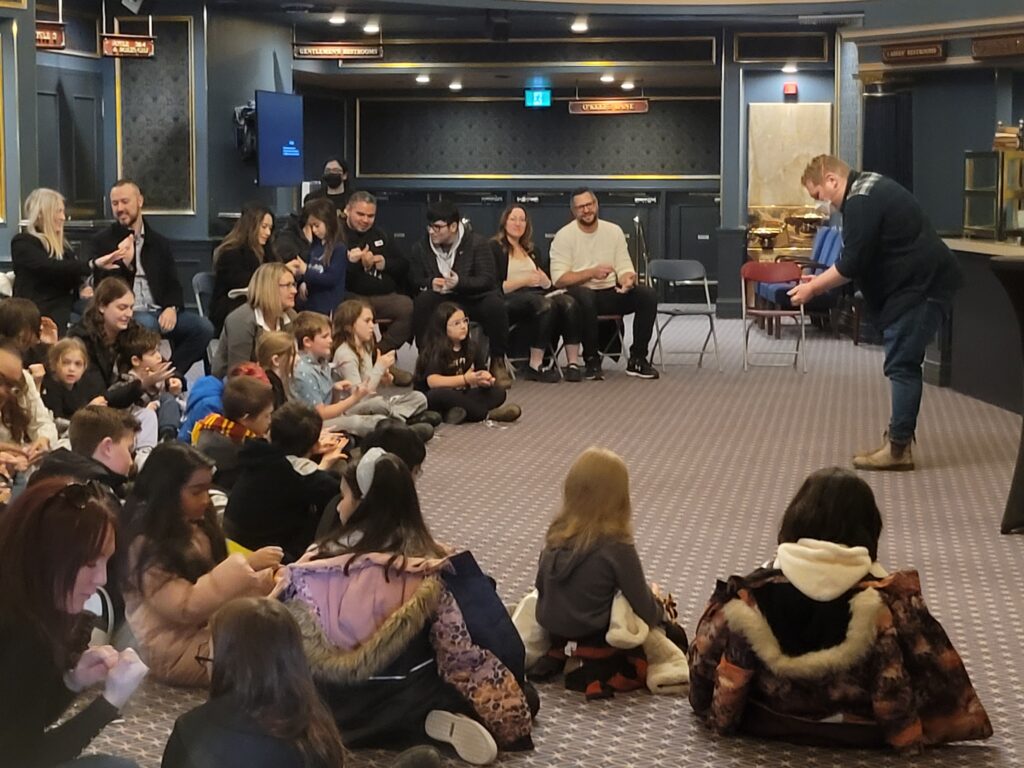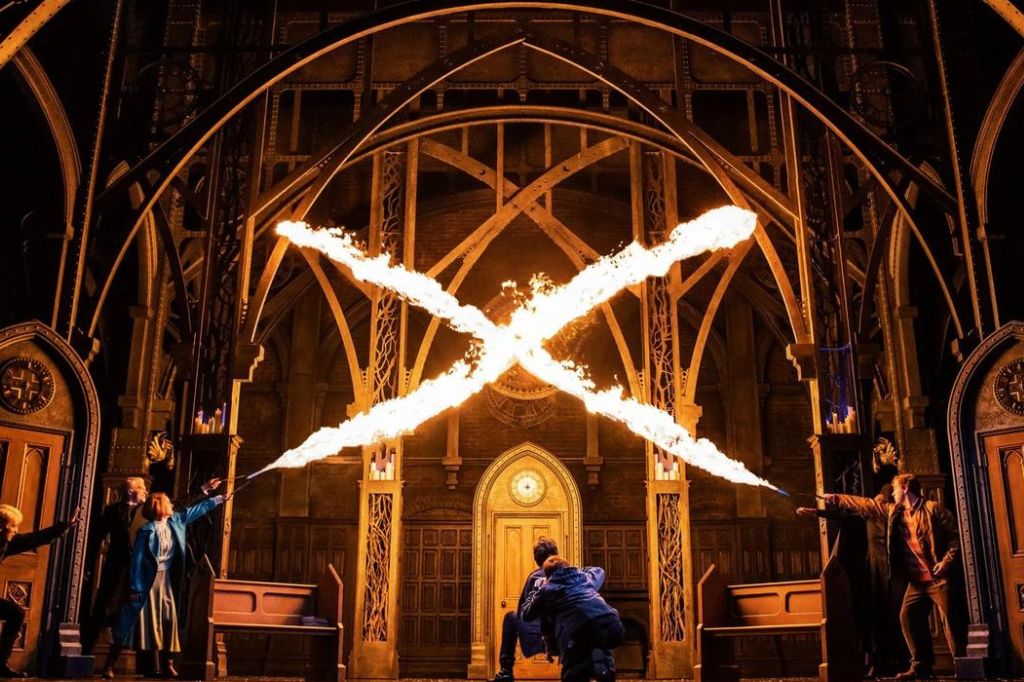Invisibility cloaks, cardboard rockets, and flying orbs of light: Here’s how Canadian theatre uses the art of magic
“Hey! A friend of a friend of a friend is looking for someone in the theatre world who also does magic. I don’t know what it’s for, but I gave them your name.”
That was the gist of an Instagram DM I received in the spring of 2022 from a colleague I knew in theatre school at Humber College. I’ve been doing magic and sleight of hand for over 20 years — twice as long as I’ve been doing theatre — but I had never really merged those disciplines; in fact, I rejected the idea. I wanted to be a serious theatre artist outside of my skills as a magician.
But I couldn’t help but be intrigued. Especially when I eventually found out the opportunity had something to do with the Canadian premiere of Harry Potter and the Cursed Child with Mirvish Productions.
The show had already entered rehearsals. The team was long set. What could they possibly need someone like me for? Did they want someone to do strolling magic in the lobby before performances?
A few weeks later, following multiple phone calls, emails, and an international Zoom meeting with the original creative team, I was invited to join the Toronto company of Cursed Child as its resident illusions associate: essentially the magic version of a resident director or dance captain, recruited to help set the show and then maintain it in the long-term.
Four days after being offered the job, I was on a train from Hamilton to Toronto to dive into rehearsals, working alongside the U.S. illusions & magic associate — the brilliant and prolific Skylar Fox — and rapidly learning nearly 100 magic effects created by Jamie Harrison (of acclaimed Glasgow theatre company Vox Motus) so I could help rehearse and refine them with the mighty, mighty cast and crew.

Though I’m certainly a well-studied magician, much of the magic we brought to life in the show blew my mind. Eye-popping effects — characters transforming into others in full view, brooms floating, wands disappearing — breathed fresh, detailed life into old-school methods and secrets.
The process completely changed my perception of how magic and theatre can intersect.
These weren’t magic effects shoehorned into a story for spectacle’s sake. They were a dramaturgical imperative, tied holistically to text, movement, time signature, and narrative. We rehearsed them not like superfluous parlour tricks, but like choreographed playettes of their own: married to intention, fine-tuned to their minute micro-beats, and rendered with thrilling forward momentum.
It was then that I realized magic can be a theatrical language as powerful and essential as any other production element. It’s not as simple as a consultant coming in for a day to teach a trick or two: magic designers are often integrated parts of creative teams, crafting bespoke effects and touching basically any and every department imaginable (even things like front-of-house or building maintenance).

Cursed Child is hardly an isolated case for this hefty use of theatre magic. Plenty of prominent productions utilize magic design in considerable ways, including the current West End hit Stranger Things: The First Shadow (also featuring illusion design by Cursed Child’s Jamie Harrison and Chris Fisher), which is already planning to hit more stages internationally, with little doubt that Canada will eventually be in the mix. Hit musical adaptations from the West End and Broadway like Back to the Future (illusions by Chris Fisher) and Beetlejuice (illusions by Michael Weber) are both slated for the forthcoming Mirvish subscription season.
Of course, a common thread here is that these are all imported, big-budget commercial properties. But the beautiful thing about magic is that a relentless spirit of ingenuity and creative problem-solving is far more important than a price tag. The entire job description is about making the impossible possible onstage, and the greatest magic is achieved by earthy, organic means rather than high-tech gadgets.
One such homegrown example is Young People’s Theatre’s Dora-winning The Darkest Dark, adapted by Jim Millan and Ian MacIntyre from Chris Hadfield and Kate Fillion’s book of the same name. Canadian conjuror David Ben – who also staged the effects in the Stratford Festival’s Grand Magic last season — was tasked with crafting magic that had a childlike spirit of play and imagination, with sophisticated, memorable illusions built from humble cardboard boxes. On a smaller-scale indie level, Eric Woolfe’s Eldritch Theatre is also known to regularly feature sleight of hand in their spooky seasons of plays.
Some new works of theatre in development in Canada even centre magic in their artistic theses. I’m personally working on two new shows like this, and there are others, including The F Word: Illusions of Fatherhood, by talented multi-hyphenates Peter Fernandes and Kelly Wong, which will use magic and illusion as a means of exploring the complexities of being a parent.
It would be exciting to see even more magic integrated into Canadian theatre with companies and productions of all shapes and sizes. Our most interesting playwrights are known for their fearlessness on the page, dreaming up images and moments that pose stimulating creative challenges for live staging. Maybe a character must disappear in full view like a fading memory. Maybe an ethereal orb of light must fly over the heads of the crowd, then land in the aisle and change into a full-blooded human being. Or maybe, the tools of magic — sleight of hand, misdirection, optical illusion — are the best means of solving a stage problem that has nothing to do with making an overt moment of magic, like sneaking an actor on stage unseen.

Sometimes, the solutions to these problems could stand to be more impressionistic and less literal. Other times, a magic designer will hold the key to fulfilling a moment onstage with maximum dramatic impact in a way that most closely captures the writer’s intent. This idea has been taking firmer hold in the American and British canons of new plays and musicals, from intimate indie work to expansive commercial productions; could Canadian theatre be far behind?
After all, theatre artists and (good) magicians have, in many ways, the same job. We push the bounds of a live experience to startle audiences into confronting their realities. We aim to tell stories that linger. For a magician, there’s no such thing as “it can’t be done.” It can always be done, one way or another.










Comments